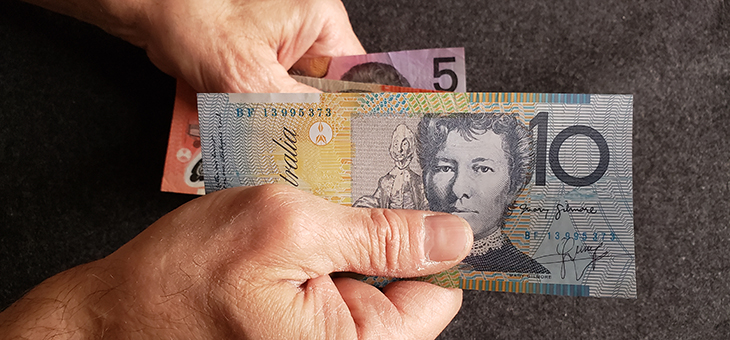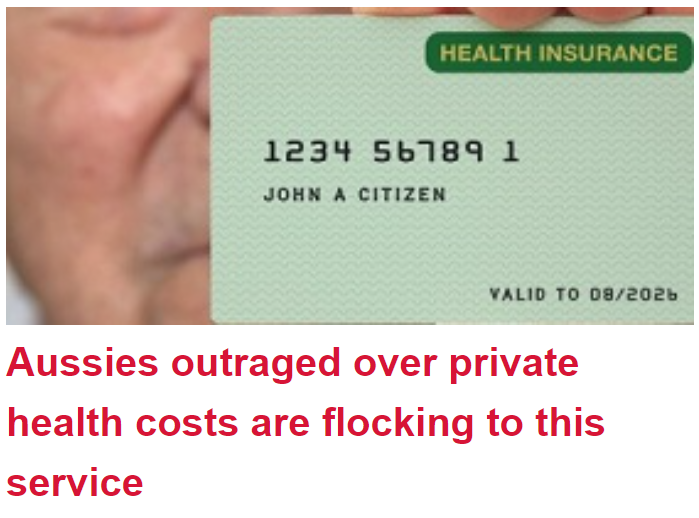An undeclared ‘tax’ is costing Aussie retirees millions each year and it’s one we can’t blame on the Australian Tax Office (ATO) .
It’s known as the loyalty tax and it’s one that most Australians seem happy to pay.
Loyalty taxes affect long-term customers. While logic dictates that being a long-term customer should deliver bonus offers and better deals, that’s not so. In fact, loyalty has a price, with newer customers favoured and older customers more often than not slammed with the ‘loyalty tax’.
Enticing offers are used to attract new customers while long-term customers foot the bill, burdened with higher costs to make up the shortfall caused by lower fees for new customers.
Banks and other financial institutions profit from faithful customers, charging higher interest rates to loyal clients. Even the federal Treasurer agrees.
“In banking, as in energy, customers get penalised for their loyalty. To win new business, banks will offer cheaper rates to new customers leaving their existing customers in the cold,” Josh Frydenberg said in response to claims big banks make billions each year by charging loyal customers higher interest rates.
Read more: What health insurers won’t tell you about saving money on your policy
These ‘taxes’ runs riot through the banking and insurance industries, but also through the energy, telecommunications and other sectors.
They’re not something consumers think about all that often, but they are a growing concern for regulators.
“We see loyal customers paying more than customers who are prepared to, and able to, challenge their bank or electricity provider and ask for a better price,” said Australian Competition and Consumer Commission (ACCC) chair Rod Sims.
“While companies are not breaching the law with this conduct, they are imposing a ‘loyalty tax’ on their customers who will then need to spend more time than they would like searching for better deals.”
So, how do these taxes work? Reserve Bank of Australia governor Philip Lowe recently revealed Australian Prudential Regulation Authority (APRA) data showing owner-occupier loan customers pay an average of 3.64 per cent when they have been with the bank for at least four years. Meanwhile, new customers pay 3.23 per cent on average.
On a $400,000 home loan, the 0.41 per cent difference adds $1634 to your interest in the first year alone. And this is based on the difference between existing and new bank customer rates. Now calculate the principal and interest payments for a loan term of 30 years …
Read more: Older Australians are paying too much interest on property loans
Wealth Within chief analyst Dale Gillham says the old ‘death and taxes’ adage needs an update.
“There are two things that tend to creep up on you very slowly – the first is old age, while the other is loyalty tax,” Mr Gillham told nestegg.
“I know there are times when I have looked down at my waistline and thought, ‘Where are those extra few centimetres coming from?’ but I have also opened my mail only to question the annual renewal for my health and life insurance thinking the same thing.
“It seems we are all guilty of paying loyalty tax, which is not a tax imposed by the ATO, but rather overinflated price increases we pay to insurance companies or service providers for remaining loyal.”
“You would think we would be rewarded with a better deal for being a long-term customer but, sadly, providers are not loyal to us.”
The onus is on consumers to avoid paying these taxes, and yet older Australians are the least likely generation to do so.
The December 2020 Bill Shock Index, released by Compare Club, showed that when it comes to switching services, the over-55 age group is far less likely to switch (38 per cent) than the younger cohort of 25 to 44-year-olds (64 per cent).
Its more recent Bill Shock Index also found that of those aged over 54, more than half (54 per cent) reported experiencing bill shock, but only 12 per cent switched service providers in response to higher bills.
“The index highlighted that Aussies aged between 25 and 44 are the most concerned about the cost of living and bills. This is when people are making big life changes and financial decisions – getting married, purchasing a home, having children and raising a family can all be financially stressful,” said Compare Club CEO Andrew Davis.
“We know that big life changes prompt customers to consider changing their providers, so we see a high percentage of consideration in this age group. The more pressing issues are either side of this, particularly people aged 45 and older who are less concerned with their bills, potentially creating a false sense of security about their financial position.”
Australians also reported general concerns about the cost of bills affecting their ability to maintain their lifestyle, yet many weren’t thinking about specific, actionable things they can do, he said.
“There is almost no value in brand loyalty to any service or insurance provider. The best way to save money on your bills and insurance costs is to regularly question what you’re paying for and have providers work to keep you as a customer. On average, households who switch their energy provider could save $219 a year. For health insurance, it’s an average potential saving of $385,” said Mr Davis.
“Even if you don’t always get a significantly better deal, sitting down and reviewing all your plans once a year is a form of financial ‘hygiene’, and you’ll inevitably feel more in control of your finances and avoid that horrible ‘bill shock’ feeling down the track.”
Wealth Within’s chief analyst agrees.
“It is up to everyone to ensure you are getting the best deal every time,” says Mr Gillham.
“First, no matter how convenient it may be, don’t roll over your insurance policies and/or other contracts automatically. Instead, set up an alert for 60 days in advance of when they are due to renew and then shop around online for the best deal.”
Read more: How to find the best energy deal and avoid bill shock
Mr Gillham suggested setting a reminder to shop around every 12 months.
“Alternatively, when you sit down to do your tax return each year, spend some time going through all your utilities and insurance bills and what it is costing you annually,” he says.
“It has the potential to save you hundreds of dollars in unnecessary charges and premiums each year.”
Mr Frydenberg said the government was committed to promoting competition and good outcomes for consumers.
“Essentially, there is a loyalty tax on customers who have shown that they are prepared to stick with the same bank, whereas new customers will get a better deal,” the Treasurer said.
“Ultimately it’s customers who can vote with their feet. We encourage people to shop around and get the best possible deal.”
Do you pay the price for loyalty? Do you think the system is unfair? How do you avoid the loyalty tax? Why not share your thoughts in the comments section below?
YourLifeChoices is owned by Compare Club.
If you enjoy our content, don’t keep it to yourself. Share our free eNews with your friends and encourage them to sign up.


